
Sages, Salvia: Planting, Pruning and Care
Contents
Sages in a nutshell
- We appreciate sages for their long-lasting, colourful blooms
- Their foliage is highly decorative, often fragrant, sometimes hairy or downy
- Easy to grow, these are robust plants, frequently very drought-resistant
- They thrive in sunny positions with well-drained soil
- Common sage offers aromatic and medicinal foliage
Our Expert's Word
Sages are plants that offer decorative flowering, usually in spikes, and aromatic foliage. The most well-known is common sage, Salvia officinalis, prized for its many benefits. It is used in cooking to flavour dishes, as well as in herbal teas or infusions. There is also a multitude of ornamental sage varieties whose colours come in very beautiful shades: we love the blue-violet flowers of Salvia nemorosa for their intensity, and the red flowers of Salvia microphylla for their vibrant hue… not to mention other varieties with white, pink or yellow tones… The choice is vast, and you will easily find blooms that appeal to you. Sages are also excellent pollinator plants, attracting bees to the garden!
But their ornamental appeal is not limited to their flowers: the foliage is also very decorative, though it varies greatly from one species to another, both in colour and texture. The leaves are often hairy or downy, making them quite soft to the touch. They are sometimes green, but can also be silvery, purplish or bluish. There are even varieties with golden leaves!
Sages are easy to grow. They thrive in full sun, in well-drained soil, even if poor. They are very hardy, their only real fear being excess moisture. As for maintenance, sage mainly requires pruning in late winter and summer. It’s best to deadhead spent flowers to prolong blooming. And if you want to propagate them, cuttings are easy to take!
Botany
Botanical data
- Latin name Salvia sp.
- Family Lamiaceae
- Common name Sauge
- Flowering suivant les variétés, entre mai et septembre-octobre
- Height souvent entre 50 cm et 1 m, parfois jusqu’à 2 m
- Exposure plein soleil
- Soil type drainant, léger
- Hardiness très variable
The sages form a highly diverse group comprising between 900 and 1000 species. They can be annual, biennial or perennial plants. Some are shrubby and can form bushes. They may be deciduous or evergreen. They have a very wide distribution range, being found on nearly all continents. Common sage grows in North Africa and Southern Europe, around the Mediterranean Basin. Salvia canariensis is a sage endemic to the Canary Islands (it grows nowhere else). In France, in the wild, you can find various species such as Salvia pratensis, Salvia glutinosa or Salvia sclarea… as well as several naturalised sage species.
Sages belong to the Lamiaceae botanical family. This family includes many medicinal and aromatic plants. Lamiaceae can be identified by several characteristics: two-lipped flowers, square stems, opposite leaves, often simple and toothed… They comprise between 6000 and 7000 species. This family includes lavender, mint, rosemary, oregano… as well as plants cultivated for their ornamental value: monardas, catmints, lamb’s ears…
Etymologically, the scientific name Salvia comes from the Latin Salvare, meaning to save or to heal, alluding to its many medicinal properties. These properties led to the plant being widely cultivated in the Middle Ages. Even today, the most commonly used sages for their aromatic and medicinal properties are common sage and clary sage. This medicinal character is due to the presence of essential oil glands in their tissues. This is also what gives them their distinctive scent when the leaves are crushed.
Most cultivated sages are perennial, but there are also some annual species. Some non-hardy perennial sages are sometimes grown as annuals.
Sages are fast-growing plants. Most reach between 50 cm and 1 m in height. However, Salvia caespitosa grows only 15 cm tall, while Salvia uliginosa, the bog sage, has a very slender habit: it bears long stems that can reach 1.5 to 2 m in height! Some sage species form true small shrubs. Common sage has an average height, usually around 70-80 cm tall, although compact varieties also exist! Some have a cushion-like habit, making them excellent ground covers, such as Salvia officinalis ‘Berggarten’.
Sage stems are square, with four angles. They are sometimes woody at the base. They take on a beautiful purplish hue in Salvia involucrata, creating a lovely contrast with the tender green foliage… Especially as this purple tint extends into the leaf veins!
Depending on the variety, sages flower between late spring and autumn. Their flowering periods vary – some are quite early, others later… This allows for staggered flowering: combine different varieties to enjoy them for longer! Common sage is one of the earliest: it flowers from May until July-August. Salvia nemorosa, Salvia splendens and Salvia farinacea flower in midsummer, while Salvia guaranitica and Salvia elegans flower in autumn. Sage flowering lasts quite a long time. Salvia microphylla, for example, flowers from May-June until frost. Some sages may produce a second flush of flowers if deadheaded.


The diversity of sage flowers! Salvia ‘Rêve Rouge’, Salvia guaranitica (photo T. Kiya), Salvia greggii ‘Icing Sugar’ and Salvia patens ‘White Trophy’
The flowers are clustered in spikes or panicles that rise skyward. They may be arranged in whorls around the stem, as in Salvia verticillata. Sometimes, sages bear a multitude of small flowers, and it’s the whole spike that is decorative. Thus, Salvia nemorosa bears very small flowers, no more than 1 cm long. Other times, the flowers are much larger and decorative individually. Those of Salvia guaranitica, Salvia splendens and Salvia involucrata can reach 5 cm in length.
Sages offer an impressive diversity of colours, often soft and luminous, but sometimes very deep. There is a wide variety of blue-violet, with beautiful shades, and sometimes very powerful tones, electric blue or midnight blue. Salvia nemorosa bears flowers of an intense violet-blue. Some sages have very vivid blooms: Salvia coccinea and splendens stand out with their bright red hues. More rarely, some sages have yellow flowers, like Salvia glutinosa. There are also white-flowered varieties, such as Salvia leucantha, which, as if to compensate for their lack of colour, sports a superb calyx of deep, velvety blue. As for Salvia discolor, it offers splendid flowers of an almost black hue! There are also bicoloured sages, like Salvia microphylla ‘Hot Lips’.
The flowers consist of five petals fused into a tube that opens into two lips. The upper lip forms a helmet, while the lower one is rather spread out and flattened. Some species have a very developed and decorative labellum (lower lip) (Salvia microphylla, Salvia jamensis…), with the upper lip extremely reduced and barely visible. Other times, it’s the opposite, the upper lip is very large and forms a helmet (Salvia pratensis…), sometimes elongated. The flowers also bear four stamens: two long and two short. The corolla tube is very long in Salvia elegans, giving the flower great finesse. Around the petals are five sepals fused into a tube, which can take on pretty colours. The flowers of clary sage have large, very decorative and sometimes coloured bracts.
Sage is a nectar-rich, pollinator-friendly plant that attracts bees, butterflies… Sage flowers are actually adapted to insects: they land on the lower lip (which serves as a landing pad) to feed on nectar, while the stamens, placed against the upper lip, bend down onto the insect’s back, so it carries the pollen away!
Sages have aromatic foliage, offering various scents: pineapple (Salvia elegans and Salvia rutilans), blackcurrant (Salvia discolor), anise (Salvia guaranitica)… In several species, the leaves are used in cooking, for example to flavour meat, or as herbal tea for their medicinal properties.
Although the foliage of ornamental sages is often green, it can also be grey, bluish, purplish… Common sage, the type species, has grey-green leaves. But the various varieties it has given rise to offer a whole range of colours! Salvia officinalis ‘Icterina’ is remarkable for its very bright, yellow-variegated foliage! The leaves are grey in the variety ‘Berggarten’, purple in ‘Purpurascens’… But perhaps the most surprising is the variety ‘Tricolor’: with grey-green leaves variegated with cream-white and tinged with purple. As for pineapple sage ‘Golden Delicious’, it bears golden foliage which, combined with its bright red flowers, makes the plant extremely luminous. The leaves of Salvia argentea are very different from all other sages: they are huge, very broad and covered with hairs, with a distinctly silvery hue.
The leaves are often oval or oblong, sometimes rather triangular, broad at the base and tapering to a point at the tip. Most varieties have toothed leaf margins. The vast majority of species have entire leaves, except Salvia jurisicii, which bears astonishing leaves, very different from other species: they are divided into extremely fine, linear leaflets, giving them a feathery appearance. Sage leaves often have a soft, felt-like texture. They are frequently hairy or downy (Salvia officinalis). They are puckered in clary sage.


Sages offer very varied foliage: Salvia officinalis ‘Grower’s Friend’, Salvia involucrata, Salvia tiliifolia and Salvia argentea ‘Artemis’
The leaves are opposite: they are arranged in pairs on the stems, facing each other. Common sage and Salvia nemorosa have medium-sized leaves, measuring between 5 and 10 cm long. There are also species with small leaves (less than 4 cm long): Salvia microphylla, Salvia greggii, Salvia jamensis… Conversely, they are large in Salvia guaranitica, Salvia hians or Salvia verticillata… and especially in clary sage, where they can reach 20-25 cm!
Bog sage, Salvia uliginosa, has a rhizome that allows it to spread. This also makes it easier to divide. Some sages have a tuberous root (e.g. Salvia patens).
After flowering, each flower produces four dry fruits clustered together, called achenes (the whole is called a tetrachenium), rounded in shape and brown in colour.
The hardiness of sages varies greatly. Common sage can withstand temperatures down to -15°C, while others are much less hardy. Salvia splendens and Salvia patens, for example, are often grown as annuals due to their low hardiness.
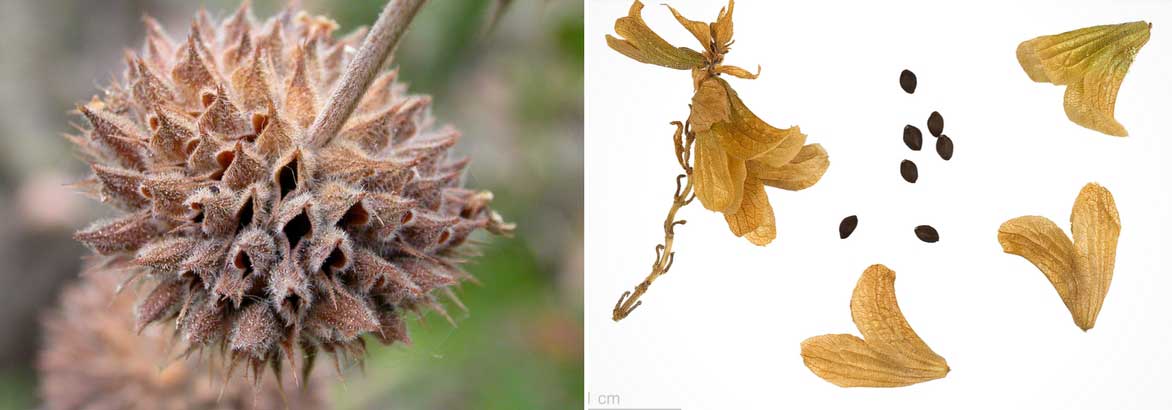

The fruits of Salvia mellifera, surrounded by dried calyces (photo Curtis Clark) / The fruits and seeds of Salvia canariensis (photo Roger Culos – Museum de Toulouse)
Read also
How to take cuttings from wood sage?The main varieties of sages

Salvia nemorosa Caradonna - Woodland Sage
- Flowering time June to October
- Height at maturity 50 cm

Salvia nemorosa Mainacht - Woodland Sage
- Flowering time June to October
- Height at maturity 60 cm

Salvia nemorosa Schneehügel - Woodland Sage
- Flowering time July to October
- Height at maturity 50 cm
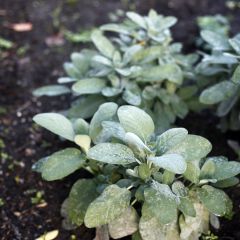
Salvia officinalis Berggarten
- Flowering time July, August
- Height at maturity 80 cm
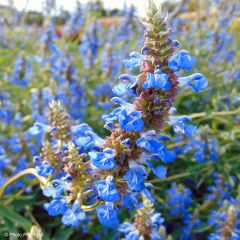
Salvia uliginosa African Skies
- Flowering time September to November
- Height at maturity 1,50 m
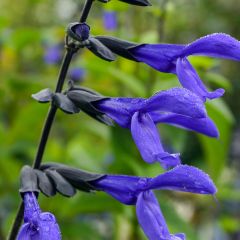
Salvia guaranitica Black and Blue - Shrubby Sage
- Flowering time September to November
- Height at maturity 1,75 m

Salvia buchananii Love and Wishes
- Flowering time August to November
- Height at maturity 55 cm
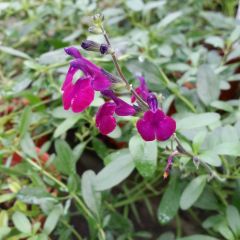
Salvia jamensis Violette de Loire
- Flowering time June to December
- Height at maturity 60 cm
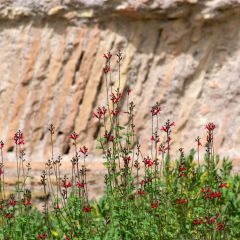
Salvia microphylla Royal Bumble
- Flowering time June to December
- Height at maturity 60 cm
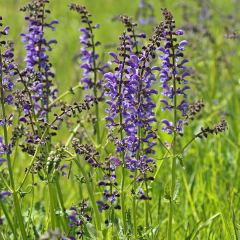
Salvia pratensis - Meadow Sage
- Flowering time July to September
- Height at maturity 75 cm

Salvia elegans Pineapple
- Flowering time October to December
- Height at maturity 80 cm
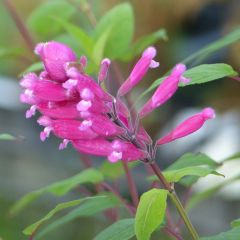
Salvia involucrata Bethelii
- Flowering time August to December
- Height at maturity 1,30 m

Salvia discolor
- Flowering time July to October
- Height at maturity 60 cm
Discover other Salvia - Sage
Planting Sage
Where to Plant?
Sage thrives in warm exposures; plant it preferably in full sun, or under light shade. When planted in sunny spots, it will produce even more aromatic foliage! In northern France, it’s essential to give it a very sunny location—don’t hesitate to plant it against a south-facing wall. In warmer regions, you can place it under light shade. There are also some shade-loving sages: Salvia glutinosa, Salvia koyamae… perfect for woodland settings!
Generally, sages require well-drained soil. They truly dislike moisture (especially in winter!). Plant in rather dry, deep, porous, and light soil. Common sage (Salvia officinalis) grows well even in poor, stony soil. If your soil is clay-heavy, you must improve drainage: mix in pumice or gravel, and plant on a mound to allow water to run off. Common sage also prefers slightly alkaline soils. It’s also best to plant sage in a sheltered spot, protected from wind.
Although most sages prefer well-drained and rather dry soils, bog sage (Salvia uliginosa) needs moist, even damp soil. Similarly, Salvia involucrata enjoys rich, fertile soil and tolerates cool conditions well. Sticky sage (Salvia glutinosa) is another species that thrives in cooler spots.
Some species are perfect for rock gardens: Salvia caespitosa, Salvia jurisicii… Perhaps the best for dry gardens is Salvia pachyphylla, the Desert Sage. Some non-hardy sages may prefer cultivation in a cold greenhouse.
If your soil isn’t suitable for sage (too heavy, clay-rich, damp…), plant it in pots or containers, which you can place on a balcony, for example. Add a drainage layer at the bottom and plant in a mix of compost and sand. Similarly, grow non-hardy species in pots so you can easily bring them indoors in winter to protect them from frost.
Don’t hesitate to plant sage in the vegetable garden alongside other herbs and vegetables: it repels certain pests, such as cabbage white butterflies, and attracts pollinators.
When to Plant?
The best time to plant sage is in spring, around April and May.
How to Plant?
If your soil is heavy or clay-rich, add drainage materials and plant on a mound. Otherwise, consider growing sage in pots. For common sage in open ground, space plants about 40 cm apart.
- Dig a planting hole, twice the size of the root ball. Improve your soil if needed—add gravel or pumice for drainage, or compost to enrich it… Create a mound to elevate the plant if your soil is heavy and water-retentive.
- Plant the sage in the hole. The top of the root ball should be level with the ground. Backfill with soil and lightly firm it down.
- Water thoroughly.
- Optionally, mulch around the base to suppress weeds.
You can also plant sage in pots or containers. Place a drainage layer at the bottom (pot shards, clay pebbles, pumice…). Add the growing medium, position the plant, cover with soil, and water well.
pruning and caring for sage
Most sages can do without watering, but it’s preferable to provide some water during prolonged drought to ensure abundant flowering. Water sparingly (always wait until the soil is completely dry), as sage dislikes excess moisture, especially in winter. There are also some species that prefer moist soils, like Salvia uliginosa, the Bog Sage, which will require more regular watering.
Apply a layer of mulch to suppress weeds and protect the plant from winter cold.
It’s important to prune sage plants in late winter. This helps to tidy up the clump and maintain an attractive shape while encouraging vigorous new growth. Sages tolerate hard pruning. Shrubby species can be cut back by half, while herbaceous sages can be pruned right down to ground level. Remove any dead or damaged branches. You can also carry out pruning during the growing season to encourage bushier growth. We also recommend regularly deadheading spent flowers to promote new blooms! It’s common for Salvia nemorosa to produce a second flush of flowers when faded stems are cut back.
It’s advisable to replace plants every five years on average, as they can become exhausted. Don’t hesitate to divide them – this will rejuvenate them, and you can plant the divisions elsewhere in your garden.
We recommend applying well-rotted compost in spring. Spread it around the base of your plants and lightly work it into the soil. If growing sage in pots, remember to provide some fertiliser too.
Harvesting leaves of common sage (Salvia officinalis) and clary sage can be done from spring to autumn. Start picking leaves once the plant is well established and bushy. (Avoid stripping foliage immediately after planting!) Harvest the leaves and use them fresh or dry them. For maximum flavour, it’s best to gather them in the morning before flowering begins, picking younger leaves rather than older ones.
Sages are susceptible to some fungal diseases that develop due to excess moisture. If you notice white powdery spots on leaves, this is powdery mildew. They can also be affected by botrytis. Regarding pests, you may encounter aphids or red spider mites. Slugs and snails sometimes nibble young shoots too.
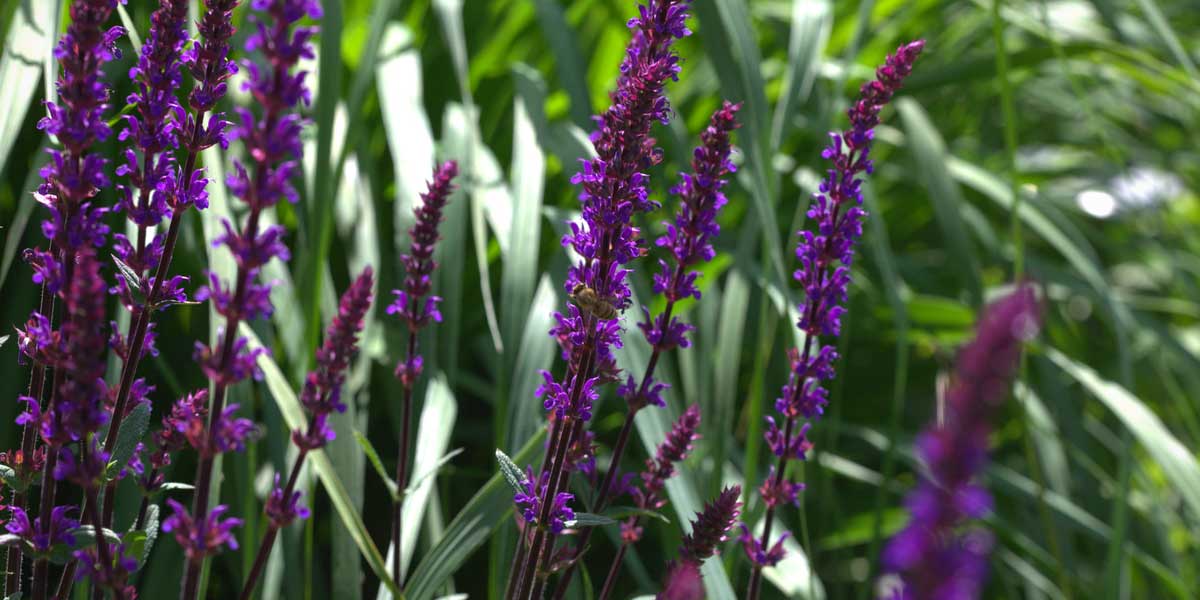
Propagation: Sowing, Dividing and Taking Cuttings from Sage
Sage can be propagated through several different techniques. For common sage (Salvia officinalis), we recommend cuttings rather than sowing, as you’ll obtain new plants more easily and quickly.
Sowing
Sow annual species in March under cover; and perennials, including Salvia officinalis, a little later in spring. You can choose to sow common sage directly in the ground or in pots.
In the ground:
- Prepare the soil by refining the seedbed and breaking up large clumps. You can add coarse sand if your soil tends to retain water. Also add some compost.
- Place the seeds on the soil. You can sow them in small clusters of 4-5 seeds.
- Cover them with a thin layer of compost.
- Water gently with a fine spray.
Continue watering regularly to keep the substrate moist until germination. Thin out the seedlings once they’ve grown, keeping only the strongest.
In pots:
- Take a pot and fill it with a mix of compost and sand.
- Scatter the seeds on the surface.
- Cover them with a thin layer of substrate, then press down lightly.
- Water gently with a fine spray.
Place the pot under cover in a bright location. The temperature should be around 20°C. Keep the substrate slightly moist until germination. Transplant the young seedlings once they’re large enough to handle.
Division
You can propagate sage by dividing clumps in spring. Some varieties are more suited to this method than others. For example, Salvia uliginosa has spreading rhizomes, making it quite easy to propagate this way. Division is a good technique for rejuvenating plants and preventing them from becoming exhausted.
Choose a well-established plant that’s several years old. Dig it up carefully, ensuring you don’t damage the roots. Separate it into several sections, making sure each piece has roots. Don’t hesitate to reduce the foliage. Replant the divisions in another location or in pots. Water well.
Cuttings
Sages can be propagated from softwood cuttings in spring, around June.
- Take a 10 cm stem cutting from the tip of a non-flowering branch.
- Remove the leaves from the base, keeping only a few at the top. Make a clean cut just below a node.
- Prepare a pot with a mix of compost and sand. Moisten it.
- Optionally dip the base of the cutting in rooting hormone.
- Plant the cutting and firm the substrate around it to ensure good contact.
- You can place a plastic bag over the pot to create a humid atmosphere.
Place the pot in a bright spot out of direct sunlight. Keep the substrate moist until the cutting develops roots. You can then plant it in the garden or repot it into a larger container.
→ Learn more about propagating shrubby sage from cuttings in our tutorial!
Layering
Sage naturally tends to layer itself when its trailing stems touch the ground. Simply take stems that have rooted, separate them from the parent plant, and replant them elsewhere.
Alternatively, you can encourage branches to root to create new layers. Choose a long, flexible stem and bury a leafless section in the soil. Secure it with hooks. Water well. Roots will form on the buried section. You can then separate the new plant from the original. Plant it in the ground or in a pot.
Pairing Sage in the Garden
Common sage and clary sage will naturally find their place in a cottage garden, blending utilitarian plants (vegetables, aromatic and medicinal herbs) with flowers, along with a few shrubs and fruit trees. You can plant sages alongside other aromatic herbs such as mint, oregano, rosemary, or savory. Add edible flowering plants and medicinal herbs, which you can use for herbal teas. For example, plant sage with comfrey, borage, angelica, or cornflowers, and, of course, include some vegetable plants… Especially since sage repels certain pests while attracting bees and beneficial insects.
You can also incorporate sage into a flowerbed or mixed border. Plant it alongside a multitude of colourful flowers: Nepeta, Leucanthemum, Zinnia, Echinacea, Delphinium, Cosmos, Dahlias… The blue-violet blooms of Salvia nemorosa pair beautifully with roses. Create a stunning display by combining them with the ‘Gertrude Jekyll’ rose and Phlox carolina ‘Bill Baker’. You could design a flowerbed in the “cottage garden” style, with an abundance of intertwined flowers and foliage, favouring soft pastel tones. This type of garden has both a natural, lush feel and a romantic charm.
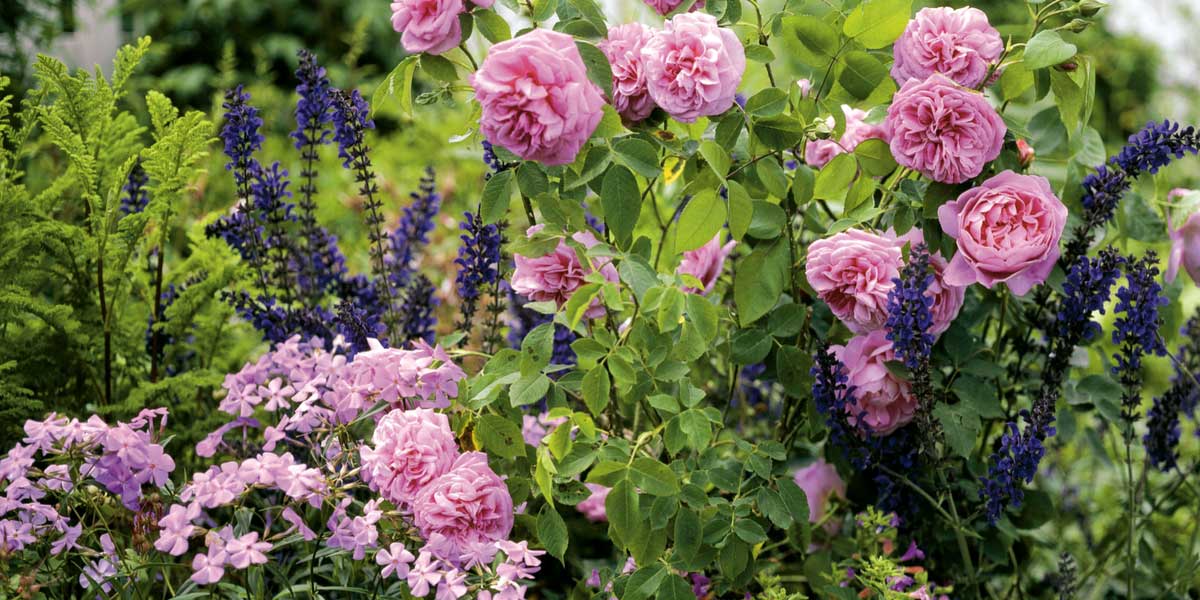
Salvia nemorosa with the ‘Gertrude Jekyll’ rose and Phlox carolina ‘Bill Baker’ (photo Friedrich Strauss – MAP)
Use the colourful blooms of salvias to create contrasts and harmonies… Salvias offer a variety of blue hues: from sky blue to midnight blue, including electric blues and blue-violets. Design a blue garden, with a calming effect, by prioritising Salvia nemorosa and adding a few white blooms. For example, plant Salvia nemorosa alongside lupins, campanulas, Leucanthemum, and phlox. Salvias also pair well with the delicate, airy blooms of poppies and alliums.
Some salvias, with their very airy habit, send up long, slender spikes towards the sky. Their flexible, lightweight nature allows them to blend seamlessly into naturalistic-style gardens. Plant them among tall grasses, such as Stipa tenuifolia… They will blend into the landscape while adding subtle touches of colour. Pair them also with the airy blooms of yarrow or Verbena bonariensis… Plants with a relaxed habit that evoke a sense of freedom.
Take advantage of salvias’ drought resistance to create a dry garden, requiring minimal maintenance. Choose a sunny spot and consider designing a rock garden, or at least a fairly mineral-rich flowerbed. Improve drainage by raising the bed into a mound or adding porous materials (pumice, gravel…). Plant sage alongside other drought-tolerant plants: yarrow, ornamental grasses, Eryngium, Euphorbia myrsinites, Centranthus…
Another more original idea would be to create a garden corner featuring only soft-textured, delicate plants. For this, choose silver sage, Salvia argentea, with its large, velvety leaves that are very soft to the touch. Plant it alongside Stachys byzantina, the grass Lagurus ovatus, or Cotula hispida. Create a sensory garden by prioritising grey, fuzzy foliage and the floral spikes of grasses. Visually, complement the grey, downy foliage with light, white blooms for a timeless garden aesthetic.
Finally, you can of course combine different varieties of salvias, from early to late bloomers, to enjoy a very long flowering season from spring to autumn!
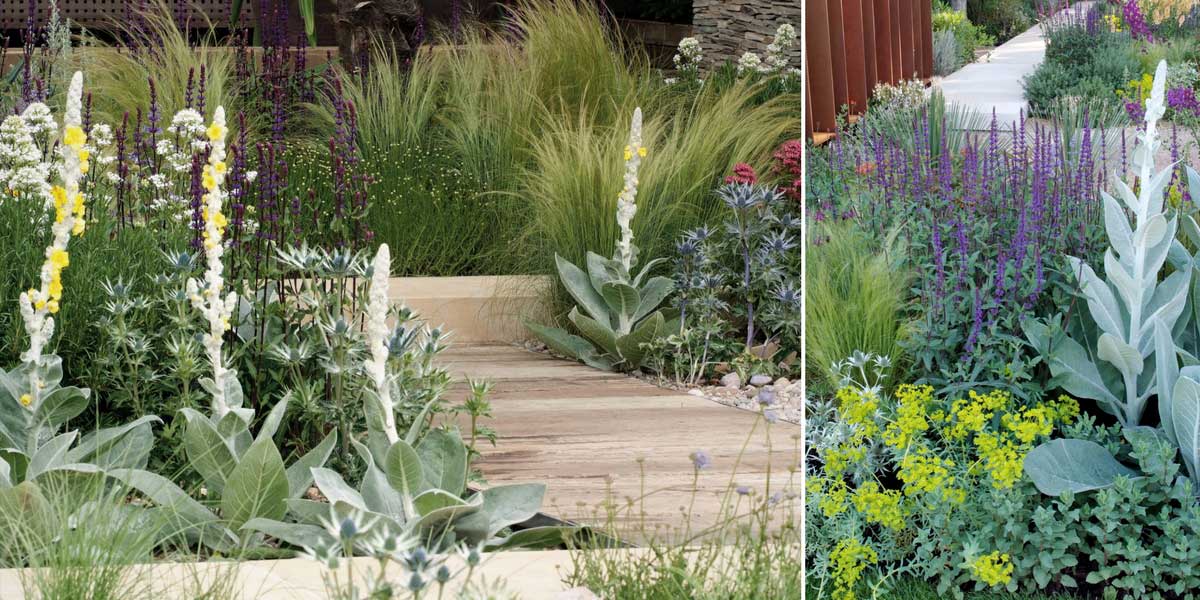

You can incorporate salvias into a dry garden! Left: Verbascum ‘Polarsommer’, Eryngium oliverianum, Centranthus, Salvia caradonna, Stipa tenuifolia (photo Nathalie Pasquel – MAP / Landscape designer Robert Myers). Right: Verbascum ‘Polarsommer’, Salvia caradonna, Euphorbia myrsinites (photo Nathalie Pasquel – MAP)
Did you know?
- A plant with multiple virtues
Sage was widely cultivated and used in the Middle Ages for its many properties, as summarised by the saying: “He who has sage in his garden does not need a doctor.” It is an excellent plant for regulating the female hormonal system. It soothes hot flushes associated with menopause and regulates the menstrual cycle. It is also antiseptic and healing, aids digestion, soothes sore throats and insect bites. It also has a stimulating, tonic effect.
- Other uses
The Salvia hispanica sage, native to Mexico, produces chia seeds: edible seeds, very rich in nutrients, which can be incorporated into salads, desserts, or muesli, as well as many savoury dishes… The leaves of white sage, Salvia apiana, are sometimes used to purify the air in the home. Sage sticks, which are burned like incense, can be found in shops. Floral water (hydrosol) of common sage is also made, with purifying and rebalancing properties. Finally, the flowers of common sage and pineapple sage are edible… You can add them to salads and desserts!
Useful resources
- Discover our wide range of salvias!
- Michael’s article on Salvia nemorosa ‘Schwellenburg’
- Our video tips for protecting non-hardy salvias
- Discover our tutorial: how to dry and store common sage?
- An article by Virginie on our blog – Aromatic Plants with Remarkable Foliage: My Favourites
- Advice sheet: 10 summer-flowering shrubs you must have in your garden
- Discover our 7 planting ideas for beautiful summer containers
- Discover our video about Bog Sage
- Our advice sheets: 5 red-flowered salvias; Blue salvias: the 5 best varieties
- Discover 8 red-flowered perennials to set your garden ablaze!
- Also check out our plant profile: shrubby salvias: planting and care advice
- Advice sheet: 7 good reasons to plant a shrubby sage
- Discover 7 long-flowering sun-loving perennials
- Advice sheet: How to soothe a sore throat with sage? and How to make homemade sage oil?: our tutorial.
Frequently asked questions
-
The leaves of my sage are covered with a white, powdery-looking felt. What should I do?
It is affected by powdery mildew, a fungal disease that thrives in high humidity. Reduce watering and, when you do water, avoid wetting the foliage. You can spray a garlic decoction or a baking soda solution.
- Subscribe!
- Contents




































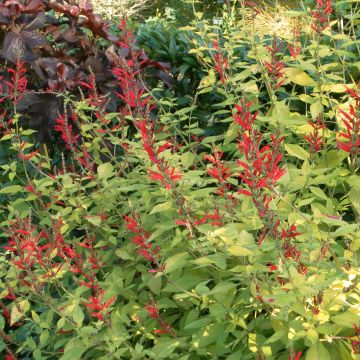
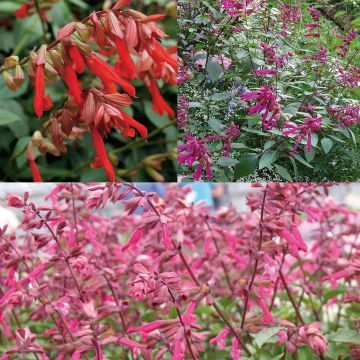
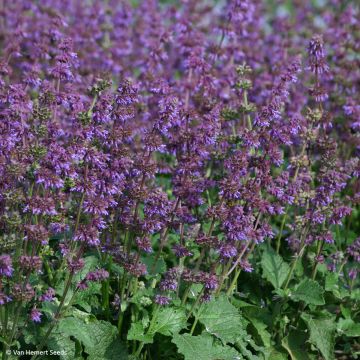

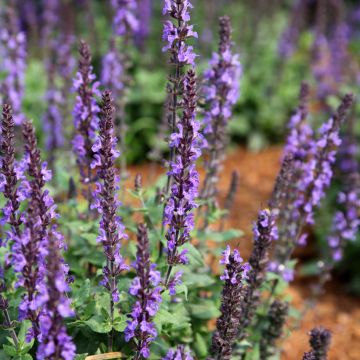


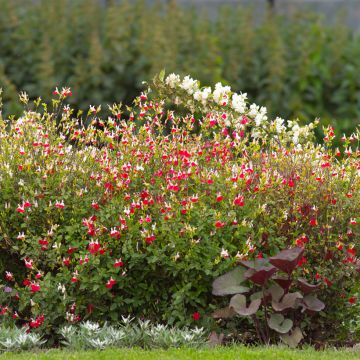

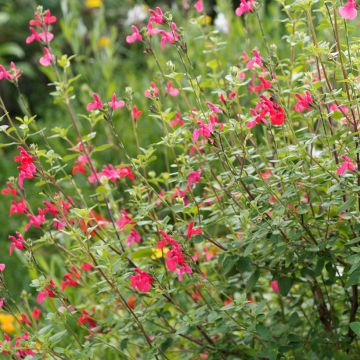
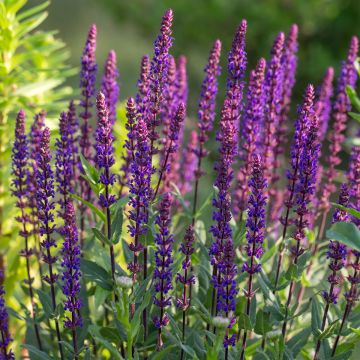

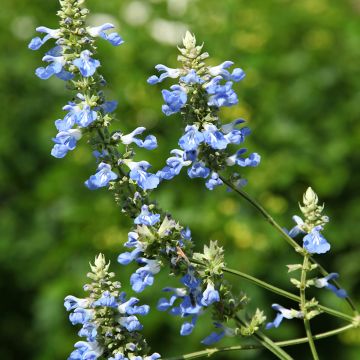
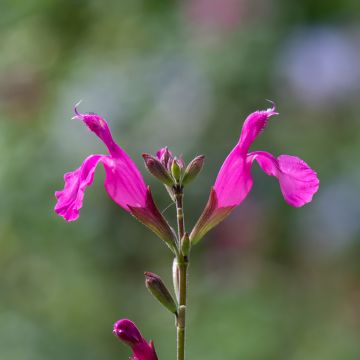
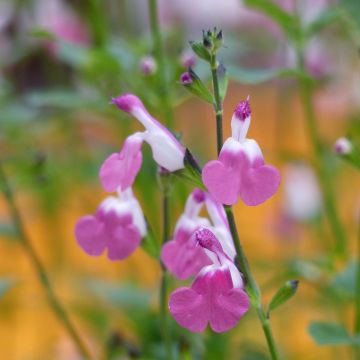
Comments